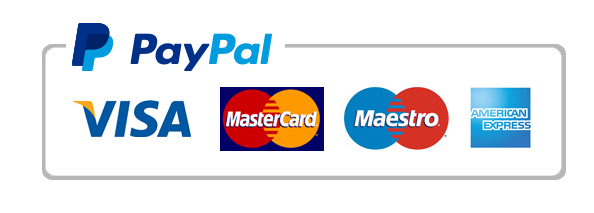Part I :
a. Soap Note Ankylosing Spondylitis
b. add questions from your case study
Part II: Ankylosing Spondylitis
a. Pathophysiology
b. Clinical Presentation
c. Physical Examination
d. Diagnostic Testing
e. Differential Diagnosis
f. Management
g. Education and Health Promotion
Power point
< 20 % plagiarism
5 References
Sample Regular Soap Note Template
PATIENT INFORMATION
Name: Mr. W.S.
Age: 65-year-old
Sex: Male
Source: Patient
Allergies: None
Current Medications: Atorvastatin tab 20 mg, 1-tab PO at bedtime
PMH: Hypercholesterolemia
Immunizations: Influenza last 2018-year, tetanus, and hepatitis A and B 4 years ago.
Surgical History: Appendectomy 47 years ago.
Family History: Father- died 81 does not report information
Mother-alive, 88 years old, Diabetes Mellitus, HTN
Daughter-alive, 34 years old, healthy
Social Hx:No smoking history or illicit drug use, occasional alcoholic beverage consumption on social celebrations. Retired, widow, he lives alone.
SUBJECTIVE:
Chief complain: “headaches” that started two weeks ago
Symptom analysis/HPI:
The patient is 65 years old male who complaining of episodes of headaches and on 3 different occasions blood pressure was measured, which was high (159/100, 158/98 and 160/100 respectively). Patient noticed the problem started two weeks ago and sometimes it is accompanied by dizziness.He states that he has been under stress in his workplace for the last month.
Patient denies chest pain, palpitation, shortness of breath, nausea or vomiting.
ROS:
CONSTITUTIONAL: Denies fever or chills. Denies weakness or weight loss. NEUROLOGIC: Headache and dizzeness as describe above. Denies changes in LOC. Denies history of tremors or seizures.
HEENT: HEAD: Denies any head injury, or change in LOC. Eyes: Denies any changes in vision, diplopia or blurred vision. Ear: Denies pain in the ears. Denies loss of hearing or drainage. Nose: Denies nasal drainage, congestion. THROAT: Denies throat or neck pain, hoarseness, difficulty swallowing.
Respiratory: Patient denies shortness of breath, cough or hemoptysis.
Cardiovascular: No chest pain, tachycardia. No orthopnea or paroxysmal nocturnal
dyspnea.
Gastrointestinal: Denies abdominal pain or discomfort. Denies flatulence, nausea, vomiting or
diarrhea.
Genitourinary: Denies hematuria, dysuria or change in urinary frequency. Denies difficulty starting/stopping stream of urine or incontinence.
MUSCULOSKELETAL: Denies falls or pain. Denies hearing a clicking or snapping sound.
Skin: No change of coloration such as cyanosis or jaundice, no rashes or pruritus.
Objective Data
CONSTITUTIONAL: Vital signs: Temperature: 98.5 °F, Pulse: 87, BP: 159/92 mmhg, RR 20, PO2-98% on room air, Ht- 6’4”, Wt 200lb, BMI 25. Report pain 0/10.
General appearance: The patient is alert and oriented x 3. No acute distress noted.NEUROLOGIC: Alert, CNII-XII grossly intact, oriented to person, place, and time. Sensation intact to bilateral upper and lower extremities. Bilateral UE/LE strength 5/5.
HEENT:Head: Normocephalic, atraumatic, symmetric, non-tender. Maxillary sinuses no tenderness. Eyes: No conjunctival injection, no icterus, visual acuity and extraocular eye movements intact. No nystagmus noted. Ears: Bilateral canals patent without erythema, edema, or exudate. Bilateral tympanic membranes intact, pearly gray with sharp cone of light. Maxillary sinuses no tenderness. Nasal mucosa moist without bleeding.Oral mucosa moist without lesions,.Lids non-remarkable and appropriate for race.
Neck: supple without cervical lymphadenopathy, no jugular vein distention, no thyroid swelling or masses.
Cardiovascular: S1S2, regular rate and rhythm, no murmur or gallop noted. Capillary refill < 2 sec.
Respiratory: No dyspnea or use of accessory muscles observed. No egophony, whispered pectoriloquy or tactile fremitus on palpation. Breath sounds presents and clear bilaterally on auscultation.
Gastrointestinal:No mass or hernia observed. Upon auscultation, bowel sounds present in all four quadrants, no bruits over renal and aorta arteries. Abdomen soft non-tender, no guarding, no rebound no distention or organomegaly noted on palpation
Musculoskeletal: No pain to palpation. Active and passive ROM within normal limits, no stiffness.
Integumentary: intact, no lesions or rashes, no cyanosis or jaundice.
Assessment
Essential (Primary) Hypertension (ICD10 I10): Given the symptoms and high blood pressure (156/92 mmhg), classified as stage 2. Once the organic cause of hypertension has been ruled out, such as renal, adrenal or thyroid, this diagnosis is confirmed.
Differential diagnosis:
Ø Renal artery stenosis (ICD10 I70.1)
Ø Chronic kidney disease (ICD10 I12.9)
Ø Hyperthyroidism(ICD10E05.90)
Plan
Diagnosis is based on the clinical evaluation through history, physical examination, and routine laboratory tests to assess risk factors, reveal identifiable causes and detect target-organ damage, including evidence of cardiovascular disease.
These basic laboratory tests are:
· CMP
· Complete blood count
· Lipid profile
· Thyroid-stimulating hormone
· Urinalysis
· Electrocardiogram
Ø Pharmacological treatment:
The treatment of choice in this case would be:
Thiazide-like diuretic and/or a CCB
· Hydrochlorothiazide tab 25 mg, Initial dose: 25 mg orally once daily.
Ø Non-Pharmacologic treatment:
· Weight loss
· Healthy diet(DASH dietary pattern): Diet rich in fruits, vegetables, whole grains, and low-fat dairy products with reduced content of saturated and trans l fat
· Reduced intake of dietary sodium: <1,500 mg/d is optimal goal but at least 1,000 mg/d reduction in most adults
· Enhanced intake of dietary potassium
· Regular physical activity (Aerobic): 90–150 min/wk
· Tobacco cessation
· Measures to release stress and effective coping mechanisms.
Education
· Provide with nutrition/dietary information.
· Daily blood pressure monitoringat home twice a day for 7 days, keep a record, bring the record on the next visit with her PCP
· Instruction about medication intake compliance.
· Education of possible complications such as stroke, heart attack, and other problems.
· Patient was educated on course of hypertension, as well as warning signs and symptoms, which could indicate the need to attend the E.R/U.C. Answered all pt. questions/concerns. Pt verbalizes understanding to all
Follow-ups/Referrals
· Evaluation with PCP in 1 weeks for managing blood pressure and to evaluate current hypotensive therapy. Urgent Care visit prn.
· No referrals needed at this time.
References
Domino, F., Baldor, R., Golding, J., Stephens, M. (2017). The 5-Minute Clinical Consult 2017 (25th ed.). Print (The 5-Minute Consult Series).
CodinaLeik, M. T. (2014). Family Nurse Practitioner Certification Intensive Review (2nd ed.). ISBN 978-0-8261-3424-0
"Looking for a Similar Assignment? Order now and Get 10% Discount! Use Code "Newclient"





